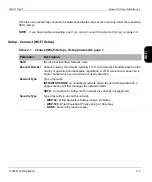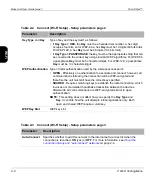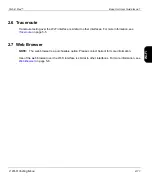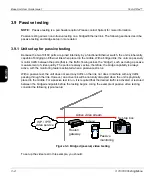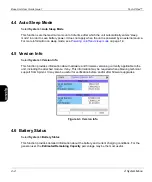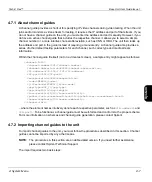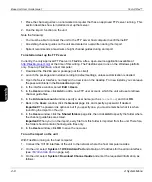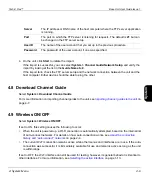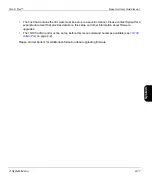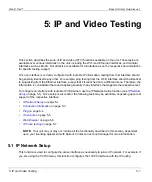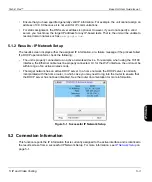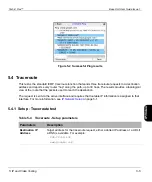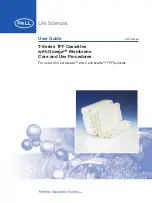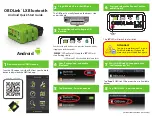
Base Unit User Guide Issue 1
Tech-X Flex™
4-2
4: System Menu
Intro
Wi
-F
i
10/100
Sy
stem
IP/V
ideo
S
p
ecs
NOTE:
All records and associated results remain on the unit until manually deleted. A unit shutdown
will not delete record data.
The unit has no specific maximum to the number of record files or the amount of results that any record
can contain. However, it does have a certain overall limit related to the constraints of physical memory. A
general rule which might be useful is to have no more than 30 record files on the unit at once, each with
no more than 20 sets of test results. The actual numbers can vary, though, especially considering the
type of results you are saving. For example, the results data set from a video test is many times larger
than a ping test.
The Record Manager lists record files in the
Name
column and indicates the currently-active file in the
Active
column. The actions that may be invoked by the respective function key include:
4.2 10/100 Admin Port
Select
System > 10/100 Admin Port
.
This function assigns IP data to the internal management interface of the unit. It is similar to the IP
Network Setup for the 10/100 test interface, except that it provides access to the internal management of
the unit, rather than the test interface. If successful, this function allows management communication
through the same physical 10/100 ports used for 10/100 testing.
Table 4-1
Record Manager functions
Function Description
New
Creates a new record file. The name can have any alphanumeric name, often reflecting a
work order number or a customer location.
NOTE:
Do not begin a record name with a period (N1 key), otherwise it will not
appear in the Record Manager.
Delete
Deletes the selected file. This action cannot be undone.
Active
Makes the select file the active file, where results will be stored during subsequent save
actions.
View
Opens the selected file for viewing in the form of a tree view of results. Normally, a results
set includes one branch with shows details on the original test setup, with a second branch
indicating the success or failure of the operation with additional details as applicable.


